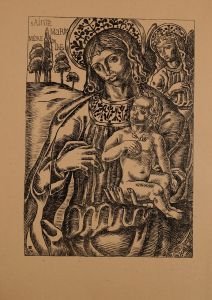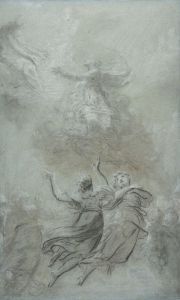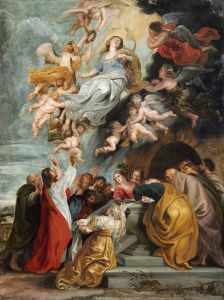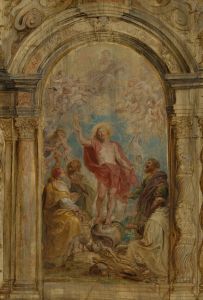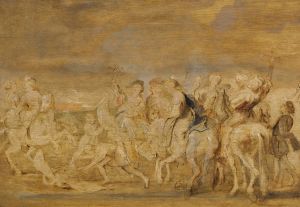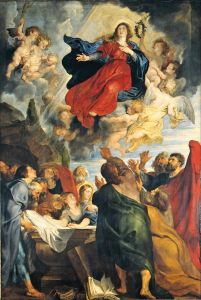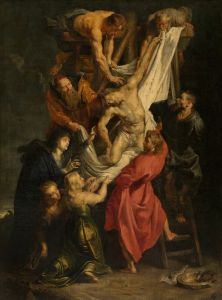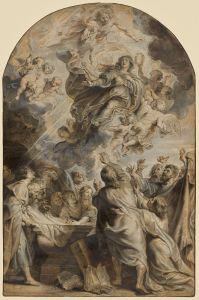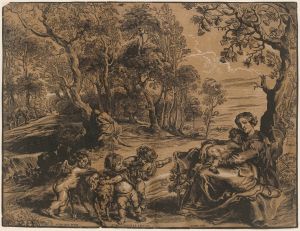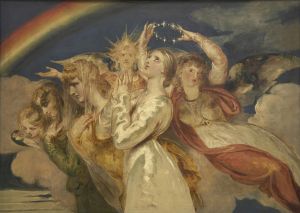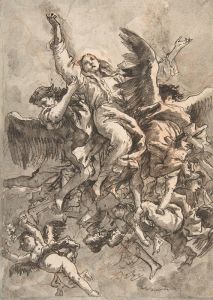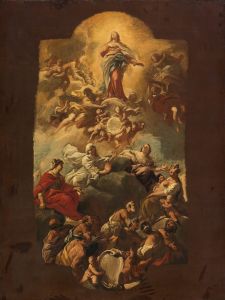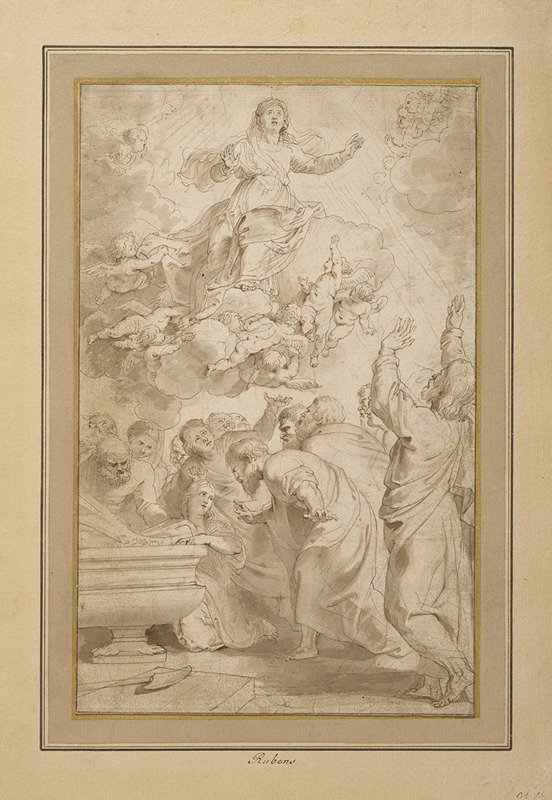
The Assumption of the Virgin
A hand-painted replica of Peter Paul Rubens’s masterpiece The Assumption of the Virgin, meticulously crafted by professional artists to capture the true essence of the original. Each piece is created with museum-quality canvas and rare mineral pigments, carefully painted by experienced artists with delicate brushstrokes and rich, layered colors to perfectly recreate the texture of the original artwork. Unlike machine-printed reproductions, this hand-painted version brings the painting to life, infused with the artist’s emotions and skill in every stroke. Whether for personal collection or home decoration, it instantly elevates the artistic atmosphere of any space.
The Assumption of the Virgin is a monumental oil painting created by the Flemish Baroque artist Peter Paul Rubens. Completed in 1626, the artwork was commissioned for the high altar of the Cathedral of Our Lady in Antwerp, Belgium, where it remains to this day. This painting is one of Rubens' most celebrated religious works and exemplifies his mastery of dynamic composition, vibrant color, and dramatic expression.
The painting depicts the Assumption of the Virgin Mary, a key event in Christian theology, where Mary is taken up into heaven body and soul. Rubens portrays the Virgin Mary at the center of the composition, ascending towards a radiant light surrounded by a host of angels. Her arms are outstretched, and her gaze is directed upwards, symbolizing her acceptance of divine grace. Below her, the apostles are gathered around her empty tomb, expressing a mixture of awe, wonder, and devotion. The figures are rendered with Rubens' characteristic energy and emotional intensity, emphasizing the spiritual significance of the scene.
Rubens' use of color and light in The Assumption of the Virgin is particularly striking. The artist employs a rich palette of reds, blues, and golds to highlight the Virgin Mary and the heavenly realm, creating a stark contrast with the darker tones used for the earthly figures below. The interplay of light and shadow enhances the sense of movement and elevates the dramatic impact of the composition.
The painting reflects Rubens' deep understanding of both Italian Renaissance and Baroque artistic traditions. During his travels in Italy, Rubens studied the works of masters such as Titian, Michelangelo, and Caravaggio, whose influence is evident in the dynamic poses, anatomical precision, and dramatic use of chiaroscuro in this work. At the same time, Rubens' unique style and ability to convey emotion and movement set the painting apart as a masterpiece of the Baroque period.
The Assumption of the Virgin was part of a larger effort to decorate the Cathedral of Our Lady following its partial destruction during the Protestant Reformation. Rubens was a prominent figure in the Counter-Reformation, and his religious works often aimed to inspire faith and devotion among viewers. This painting, with its grandeur and spiritual intensity, serves as a powerful visual representation of Catholic beliefs and the glory of the divine.
Today, The Assumption of the Virgin continues to be admired for its artistic brilliance and remains an important cultural and religious artifact. It stands as a testament to Rubens' genius and his ability to convey profound theological themes through the medium of painting.





